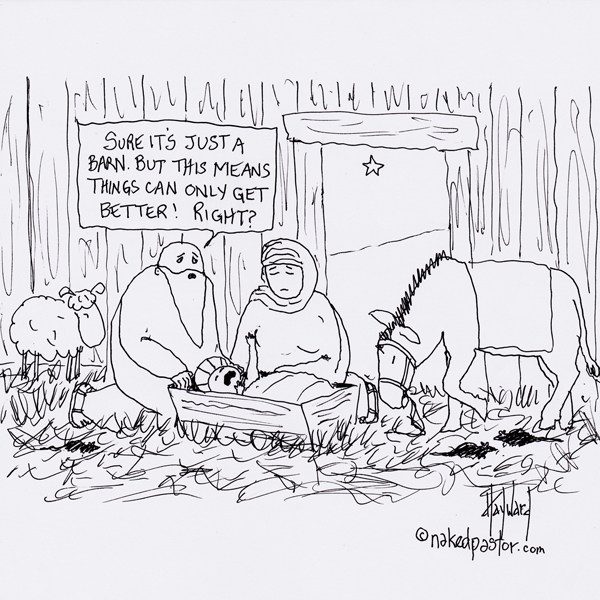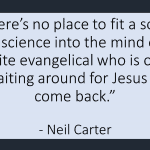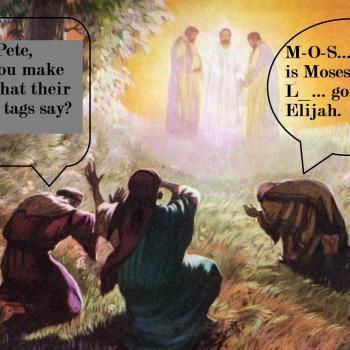There have been several Christmas-related posts, some of which cover topics that are addressed every year around this time, but many or all of which either have enough new, or remain of such relevance, that they are worth sharing.
The one I most want to highlight is Ian Paul’s explanation of why the idea that Jesus was born in a stable is wrong. There have been many such posts, and some circulate year after year, Christmas after Christmas. But this one has a really fantastic cutaway image of what a first century home, of the sort presupposed in Luke’s infancy story, may have looked like. Click through to Ian’s blog to see it.
Ágnes T. Mihálykó shared the oldest known Christmas carol. She writes:
Angels have the main role in what appears to be the earliest manuscript of a Christmas carol, preserved in Greek on a papyrus from the city of Hermopolis (modern el-Ashmunein) in Middle Egypt, Berlin P. 11842. The somewhat effaced hymn is written on the back of a tax receipt from the mid-fifth century, thus it probably hails from the same period. It is a single text that was scribbled on any available scrap papyrus, and all the empty spaces were used to write lists; perhaps someone took a note of a hymn he heard in church. The text evokes the light that appeared to the shepherds and cites the song of the angels.
Click through to read her translation.
David Hayward’s cartoon below takes the traditional mistaken viewpoint mentioned above as its basis, which makes it historically problematic. But the traditional story has other kinds of values – one of which is to inspire not only cartoons, but perhaps also Howard Jones parody songs! We’ll see whether lyrics start to occur to me. In the meantime, enjoy the cartoon!

David Hayward also shared another seasonal cartoon, on how the shopping mall (particularly at this time of year) serves as a church substitute:
https://nakedpastor.com/2018/12/how-the-shopping-mall-is-the-new-church/
Kyle Roberts talked about what we gain when we stop thinking Jesus was virginally conceived.
Paul Flesher provided information that is useful background to the infancy stories, irrespective of whether one thinks there is any hint of historical information in them or not. Here’s an excerpt:
The ancient historian Josephus indicates that, in 104-103 B.C., the Maccabean king of Judea, Aristobolus, took control of Galilee on his way farther north to conquer the Itureans who lived west of Mount Hermon. His successor, Alexander Janneaus, sent thousands of Judeans north to settle Galilee and farm its rich agricultural land during his 25-year reign. Not only did this give Judeans access to an increased amount of agricultural products, but it also solved an apparent crisis of overpopulation in Judea.Archaeological evidence also makes it clear that these new inhabitants were from Judea, for the excavated finds from the first centuries B.C. and A.D. follow the same characteristics as those of Judea. In particular, Galilean finds reveal the same concern for ritual purity with regard to the Jerusalem temple typical of Judea. The finds characteristic of Judea and Galilee that differ from the surrounding regions include: immersion pools for purification baths; stone drinking vessels, which protect from impurity; the practice of ossuary burial; and an absence of pig bones in the waste heaps.If Joseph’s family came to Galilee by this scenario, then it is quite possible that it was his grandfather who migrated from Judea to Galilee in the early decades of the first century B.C. Or, it could have been his great-grandfather. In addition, the same scenario may apply to Mary, but her engagement to Joseph caused the Gospels to record only his family lineage and leave hers out.The implications of this repopulation of Galilee during the first century B.C. are quite significant, for it indicates that the people called Galileans had lived in that area for less than a century at the time of Jesus’ birth; they did not represent a centuries-old population of that area. Their identity was still primarily Judean and had not yet been transformed into a Galilean distinctiveness.
Bart Ehrman asks what we know historically about the birth of Jesus. There is a reflection on a “caravan to Bethlehem,” a call for putting Herod back into the Christmas story, and a Christmas reflection aimed at the spiritual but not religious.
And finally, related to Jesus’ family and his later life and trade, Mike Bird explained that Jesus was probably a mason (no, I didn’t say he was a Mason – capitalization matters!):













